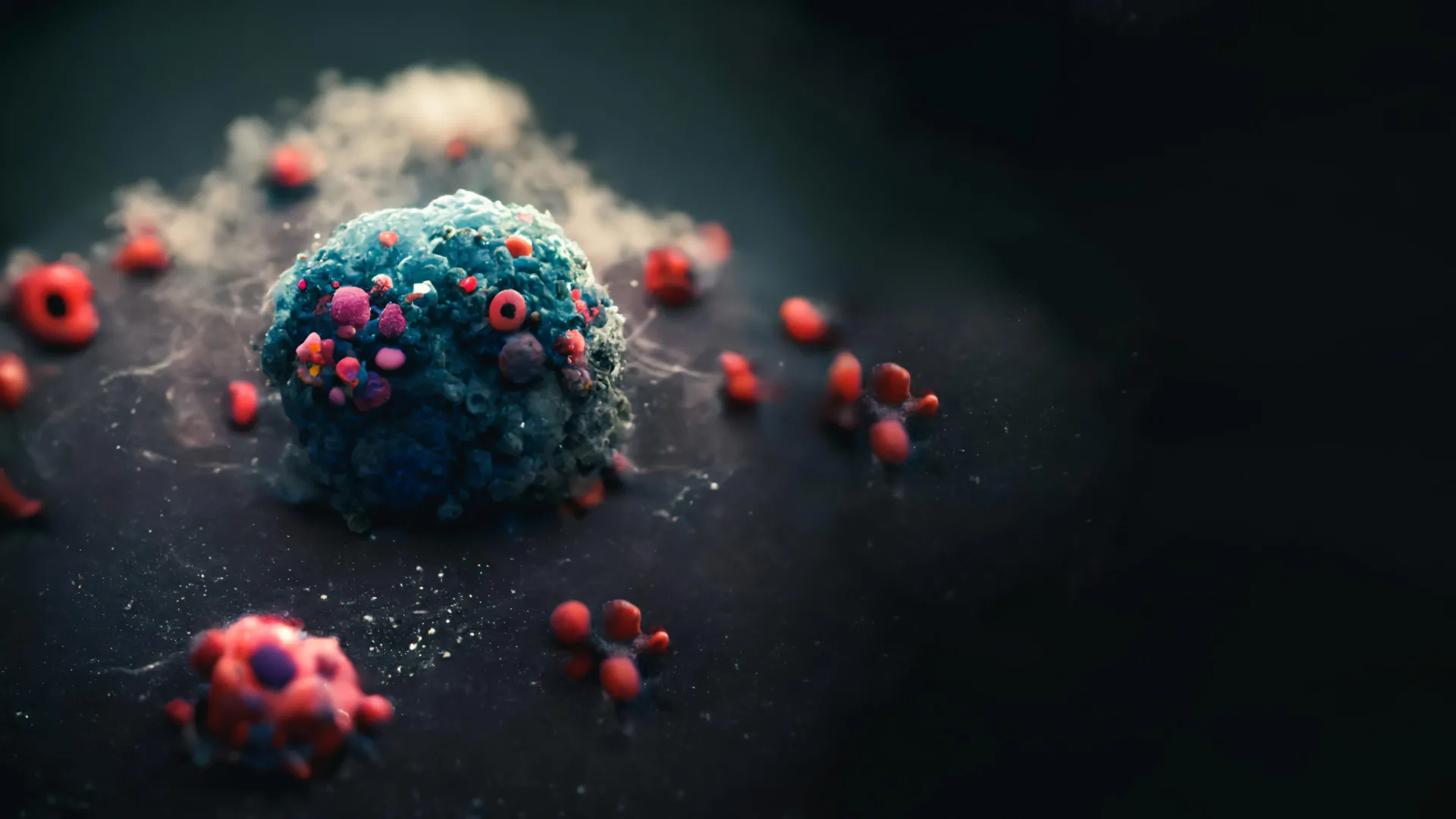Nanotech makes cancer drug 20,000x stronger, without side effects
A redesigned chemotherapy drug packs 20,000 times more punch—without the pain.
- Date:
- November 5, 2025
- Source:
- Northwestern University
- Summary:
- A Northwestern team transformed a common chemotherapy drug into a powerful, targeted cancer therapy using spherical nucleic acids. The redesign dramatically boosted drug absorption and cancer-killing power while avoiding side effects. This innovation may usher in a new era of precision nanomedicine for cancer and beyond.
- Share:

In a major step toward improving cancer treatment, researchers at Northwestern University have redesigned the molecular structure of a widely used chemotherapy drug, making it far more soluble, potent, and less toxic to the body.
The scientists built a new form of the drug using spherical nucleic acids (SNAs), a type of nanostructure that embeds the drug directly into DNA strands coating tiny spheres. This re-engineering turned a weak, poorly dissolving chemotherapy drug into a highly targeted cancer-fighting agent that spares healthy tissue.
A Dramatic Boost Against Leukemia
The new therapy was tested in animals with acute myeloid leukemia (AML), a fast-growing and hard-to-treat blood cancer. Compared with the standard chemotherapy version, the SNA-based drug entered leukemia cells 12.5 times more efficiently, destroyed them up to 20,000 times more effectively, and slowed cancer progression 59-fold -- all without detectable side effects.
This success highlights the growing promise of structural nanomedicine, a field that precisely controls the composition and architecture of nanomedicines to improve how they interact with the human body. With seven SNA-based treatments already in clinical testing, researchers believe this approach could pave the way for new vaccines and therapies for cancers, infections, neurodegenerative disorders, and autoimmune diseases.
The findings were published on Oct. 29 in ACS Nano.
"Stopping Tumors in Their Tracks"
"In animal models, we demonstrated that we can stop tumors in their tracks," said Northwestern's Chad A. Mirkin, who led the research. "If this translates to human patients, it's a really exciting advance. It would mean more effective chemotherapy, better response rates, and fewer side effects. That's always the goal with any sort of cancer treatment."
Mirkin is a leading figure in chemistry and nanomedicine, serving as the George B. Rathmann Professor of Chemistry, Chemical and Biological Engineering, Biomedical Engineering, Materials Science and Engineering, and Medicine at Northwestern. He also directs the International Institute for Nanotechnology and is a member of the Robert H. Lurie Comprehensive Cancer Center.
Rethinking a Classic Chemotherapy Drug
For this study, Mirkin's team revisited 5-fluorouracil (5-Fu), a long-standing chemotherapy drug known for its limited efficiency and harsh side effects. Because it affects healthy cells as well as cancerous ones, 5-Fu can cause nausea, fatigue, and in rare cases, heart complications.
Mirkin explained that the issue lies not in the drug itself but in its poor solubility. Less than 1% dissolves in many biological fluids, meaning most of it never reaches its intended targets. When a drug cannot dissolve well, it clumps together or remains solid, preventing the body from absorbing it effectively.
"We all know that chemotherapy is often horribly toxic," Mirkin said. "But a lot of people don't realize it's also often poorly soluble, so we have to find ways to transform it into water soluble forms and deliver it effectively."
How Spherical Nucleic Acids Transform Drug Delivery
To overcome this limitation, the researchers turned to SNAs -- globular nanoparticles surrounded by dense shells of DNA or RNA. Cells readily recognize these structures and pull them inside. In this case, Mirkin's team chemically incorporated the chemotherapy molecules into the DNA strands themselves, creating a drug that cancer cells naturally absorb.
"Most cells have scavenger receptors on their surfaces," Mirkin explained. "But myeloid cells overexpress these receptors, so there are even more of them. If they recognize a molecule, then they will pull it into the cell. Instead of having to force their way into cells, SNAs are naturally taken up by these receptors."
Once inside, enzymes break down the DNA shell, releasing the chemotherapy payload directly into the cancer cell. This structural redesign completely changed how 5-Fu interacted with leukemia cells, dramatically increasing its effectiveness.
Precision Targeting With Minimal Harm
In mouse models, the new therapy nearly eliminated leukemia cells in the blood and spleen while significantly extending survival time. Because the SNAs selectively targeted AML cells, healthy tissues remained unharmed.
"Today's chemotherapeutics kill everything they encounter," Mirkin said. "So, they kill the cancer cells but also a lot of healthy cells. Our structural nanomedicine preferentially seeks out the myeloid cells. Instead of overwhelming the whole body with chemotherapy, it delivers a higher, more focused dose exactly where it's needed."
Next Steps Toward Clinical Trials
The research team now plans to test the approach in a larger group of small animal models before advancing to larger animals and, ultimately, human clinical trials, once additional funding becomes available.
The study, titled "Chemotherapeutic spherical nucleic acids," was supported by the National Cancer Institute and the National Institute of Diabetes and Digestive and Kidney Diseases, with further support from the Robert H. Lurie Comprehensive Cancer Center of Northwestern University.
Story Source:
Materials provided by Northwestern University. Note: Content may be edited for style and length.
Journal Reference:
- Taokun Luo, Young Jun Kim, Zhenyu Han, Jeongmin Hwang, Sneha Kumari, Vinzenz Mayer, Alex Cushing, Roger A. Romero, Chad A. Mirkin. Chemotherapeutic Spherical Nucleic Acids. ACS Nano, 2025; DOI: 10.1021/acsnano.5c16609
Cite This Page: